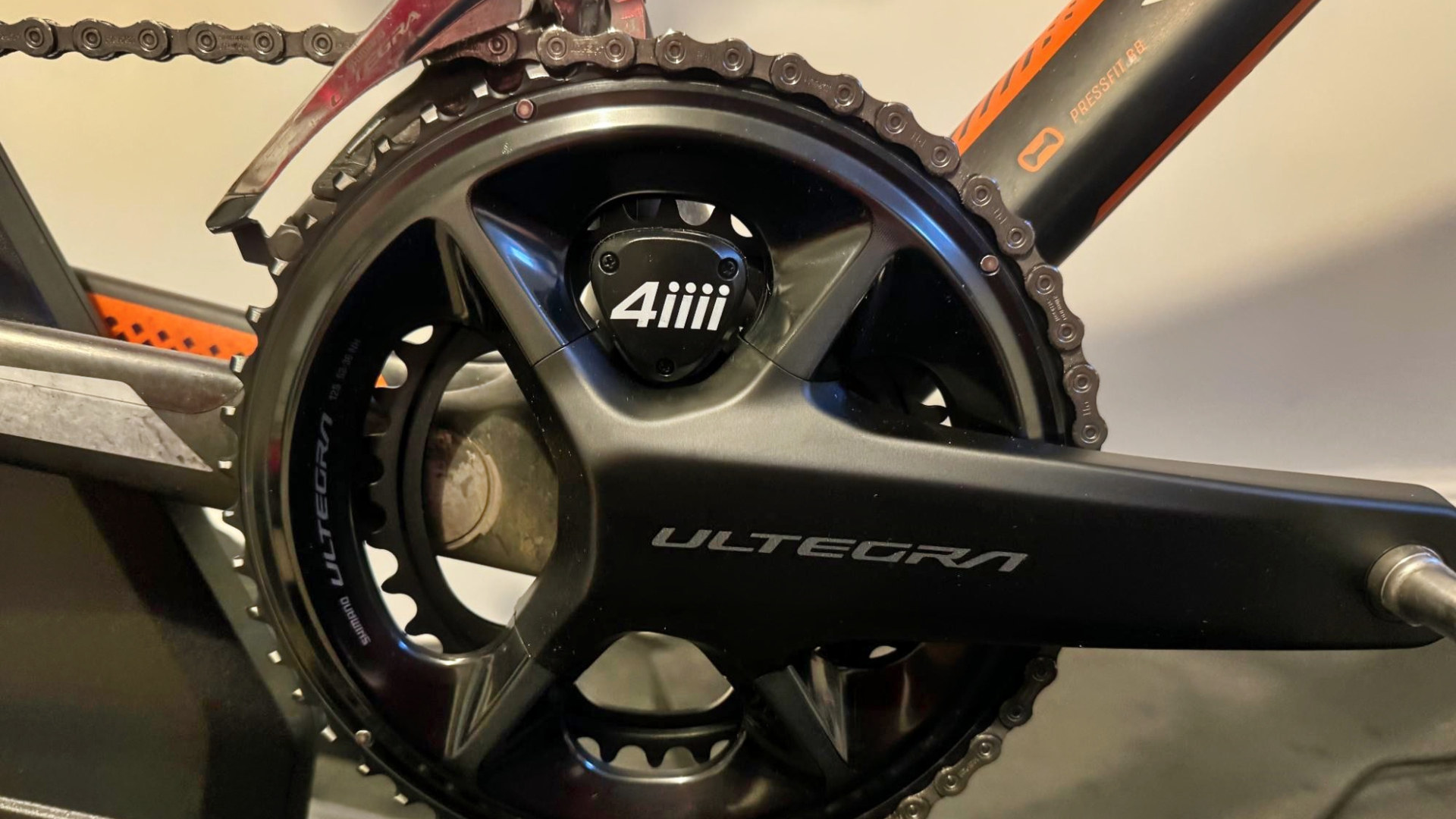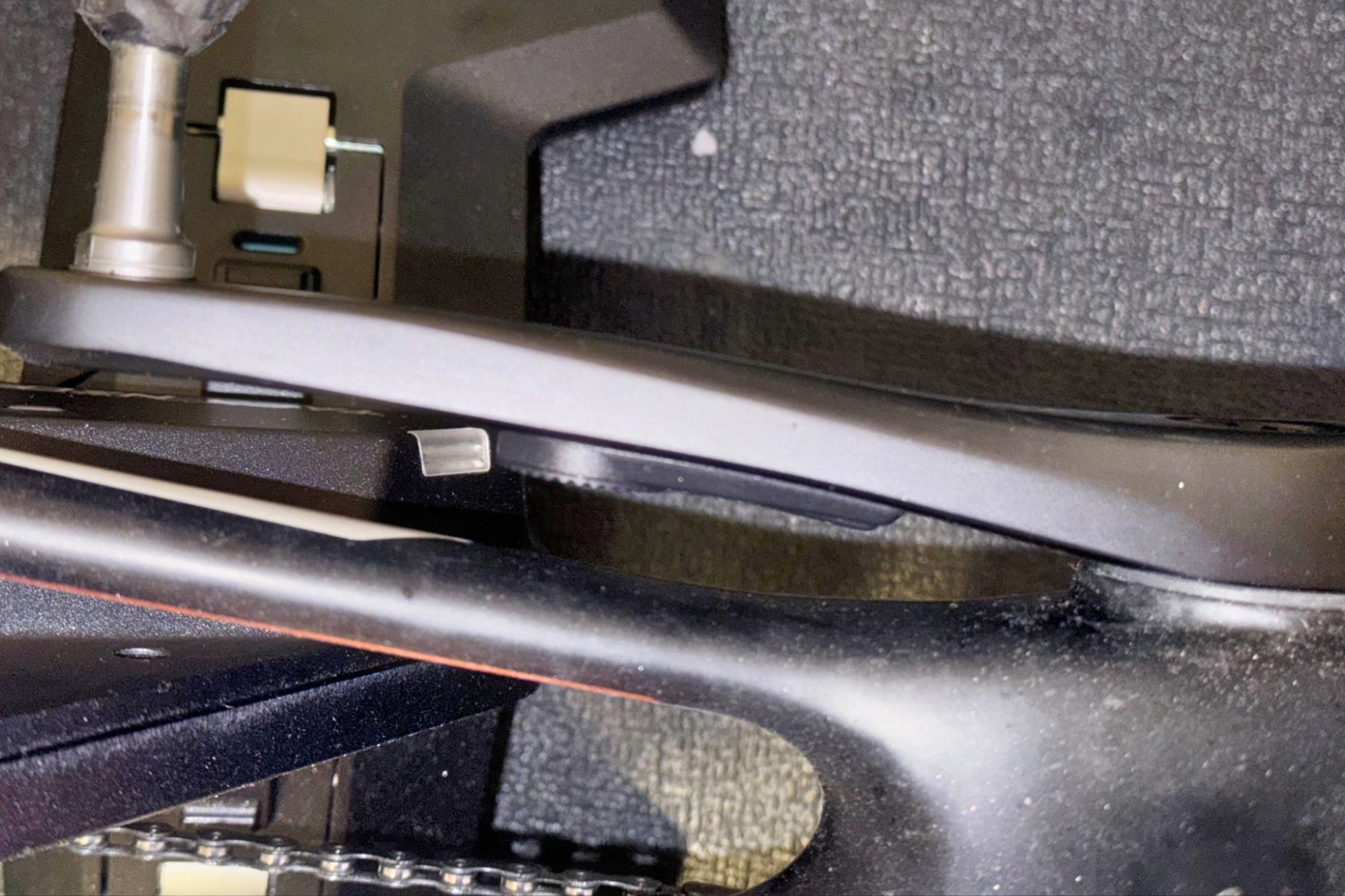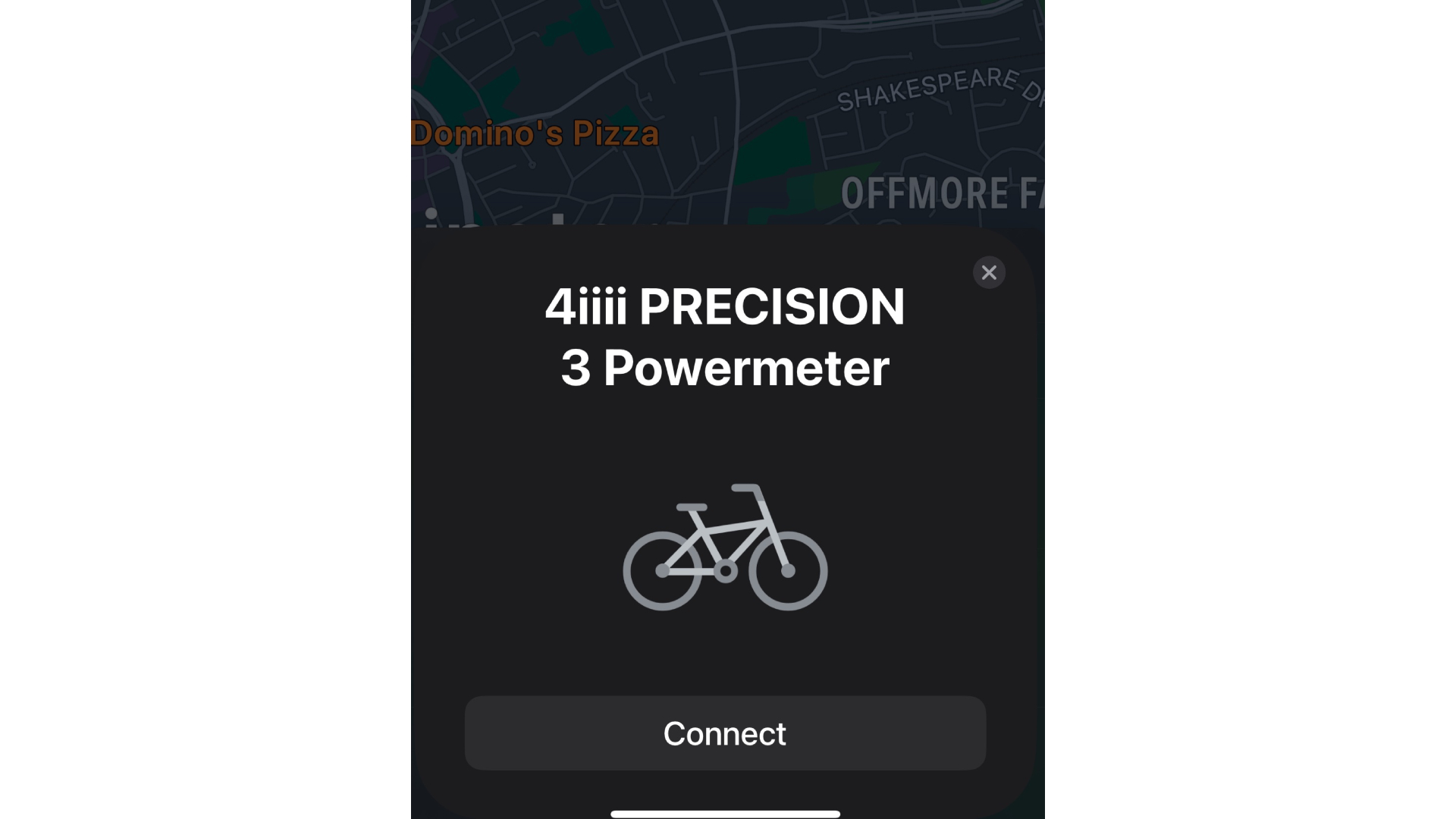
4iiii released its first power meter in 2015, debuting its '3D strain gauge technology', which is designed to measure more points of the pedals stroke for greater accuracy.
The Canadian brand was soon supporting some of the biggest sporting teams with Lotto Soudal, British Triathlon, EF Tibco SVB and making the power meters for Specialized which have been used by Quickstep Alpha-Vinal and Bora-Hangrohe.
More recently, 4iiii has been teaming up with Apple to integrate the tech giant's FindMy technology into its power meters, providing an extra element of piece of mind. This power meter is 4iiii's most recent launch: a dual-sided Precision 3+ Pro power meter with FindMy compatibility. We've had a unit on test for months and here's how it stacks up.
Construction
To cover the basics again, 4iiii's Precision 3+ PRO is the dual-sided person of the Precision 3+. The power meters and strain gauges are fitted directly to the crank arms of Shimano’s latest crank arms with the option to buy these to fit to your existing crankarms, or purchase them preinstalled.

Each power meter can be used independently, as well as working together to provide full left/right power output and dynamics. The power meter only adds 29g to the total weight of the crankset and uses CR2032 batteries to give a 55 hour battery life.
The Precision 3+ Pro uses three strain gauges per crank arm to more accurately measure the forces applied as part of the pedal stroke, allowing for 'pedal smoothness' and 'torque efficiency' to be measured. This also gives the device ±1% accuracy levels. Maximum measured resistance is an absurd 4,000 watts, with a range of 30-170 RPM being measurable, too. The new addition to the 3+ range is the inclusion of Apple FindMy integration to allow for tracking of the power meter.

The power meter connects seamlessly to bike computers or training apps using ANT+ or BLE, and can also connect to the 4iiii App to download firmware updates or calibrate the power meter. In terms of fitting the power meter to a bike, it’s as easy to attach as any Shimano crank (very).
The slimmer profile of the NDS 4iiii powerpod should mean greater compatibility with a variety of frame designs, but gravel bikes may present an issue with the flared chainstays often present. Currently 4iiii is offering factory installs on x1 groupsets on the drive side only to counter this issue, with the popularity of gravel increasing.
The ride
To test the 4iiii Precision 3+ Pro, I did a mix of indoor riding to really get into the nitty gritty power accuracy and responsiveness testing, as well as using it outdoors and putting it to the test in different temperatures and trying out the FindMy integration.
The indoor setup I used involved a Tacx Neo 3M and Wahoo Powrlink Dual Pedals to test power and cadence accuracy. In terms of power accuracy, I was impressed how well the 4iiii tracked with the other two. The Wahoo pedals read a little higher, as is almost always the case, but only 2-3%. Whereas the 4iiii crank and Tacx indoor trainer were within less than 1% of each other across the board - be it low intensity riding or sprinting. The cadence reading also stacks up with the other two power meters, both of which are rated very highly for both accuracy and reliability.
The bonus feature that the 4iiii has beyond most power meters is the ability to measure pedalling smoothness and torque efficiency. Pedalling smoothness (PS) is the average power throughout a revolution divided by the peak power during that revolution. The closer to 1 (or 100%) it is, the smoother the pedal stroke. This isn’t to say that 1 (or 100% smoothness) is needed to be fast - as Garmin found in their data, PS ranges from 10-40% are normal.

Torque efficiency (TE) is a measure of how much pedalling force is contributing to forward momentum, and is far more useful. Positive force would be the muscle turning the cranks forwards, while negative force is some resistive force applied preventing the cranks turning forwards. Garmin found normative values of 60-100%, and it is a useful measure of how efficiently your muscles are working during the pedal stroke.
Usually, lower RPM leads to a higher TE - but given that at higher power output a higher RPM is generally more efficient, it is useful to train TE at higher cadences/wattages. You can also use these metrics alongside left/right leg balance to try and understand where large discrepancies may be coming from and then be able to address them.
The only issue with this data is that many cycling apps do not store it for further analysis. Strava, Zwift and TrainingPeaks for example do not display this data anywhere. I had to rely on what I could see on my Wahoo Elemnt screen during the workouts. The only app at present I’ve been able to use for analysis is WKO5, a paid-for software. However, hopefully as more power meters start to record this data, more applications will start being able to display it.
Outdoors, I compared the 4iiii to the Powrlink pedals. Readings were again consistent across the power curve, just slightly lower. There didn’t seem to be an effect on temperature either, with cold starts leading into warmer rides not causing any power drifts. I did ensure to calibrate both power meters before each ride, but both have internal temperature compensation, so changes in temperature during a ride do not affect power readings.

This also gave me a chance to test the FindMy integration. You need to remove the battery three times on the NDS crank arm to activate Bluetooth pairing, I was then able to discover the 4iiii on FindMy and link it, name it, and I was good to go. I then shared this with my partner and she was able to see where I was on my rides and if I was moving or stationary.
The FindMy system works the same way as Apple AirTags, and relies on other Apple devices being nearby to send out a signal that can be detected by anyone with access to track the device. It works just as well as an actual AirTag, but also has the same limitations. It’s only usable on Apple devices, and if there is no Apple device nearby then no signal will be detected, only a last known transmission.
It could still be useful in the event of your bike being nicked, as thieves have gotten wise to AirTags and will remove them - whereas a power meter is both not usually a tracker and is also a lot harder to remove without the proper tools. It’s a nice additional security feature, and not one that adds a premium to the price of the 4iiii.
Value
In terms of value, the 4iiii Precision 3+ Pro is towards the higher end of dual sided power meters when purchased as a full crank - the Shimano Ultegra R8100 crankset coming in at $949.99 / £949.99. This makes it more expensive than the Stages dual sided R8100 crankset at $864.99 / £875.00 but a bit cheaper than the Rotor 2Inpower SL at $1,099.00 / £1,074.00. Keeping to dual sided power meters only, there are also pedal based options with the Favero Assioma at $769.00 / £579.99, the Garmin Rally at $1,099.99 / £969.99, and the Wahoo Powrlink at $999.99 / £849.99.
It's worth considering though that most people who are purchasing a power meter likely already have the bike and a crankset. 4iiii offers the option to install the Precision 3+ Pro onto your own cranks for $529.99 / £529.99, making the power meter far better value than many other options that require a new crank to be purchased.
However, at present the 4iiii installations are only available with Shimano Ultegra R8100 and Dura Ace R9200 cranksets. Turnaround for the factory install is also generally 5-7 days plus shipping time.
Conclusion
The 4iiii Precision 3+ Pro dual sided power meter shines with its superb accuracy, advanced pedalling dynamics, tiny weight penalty, great battery life, and an easy to use app. The FindMy integration is a neat security feature to add to your bike and also unique in the power meter market. Whilst the price is high, for Shimano users the ability to get the power meter installed to your current cranks makes this an exceptionally good value power meter. Even the full crank purchase is good value considering the superb functionality and performance.







